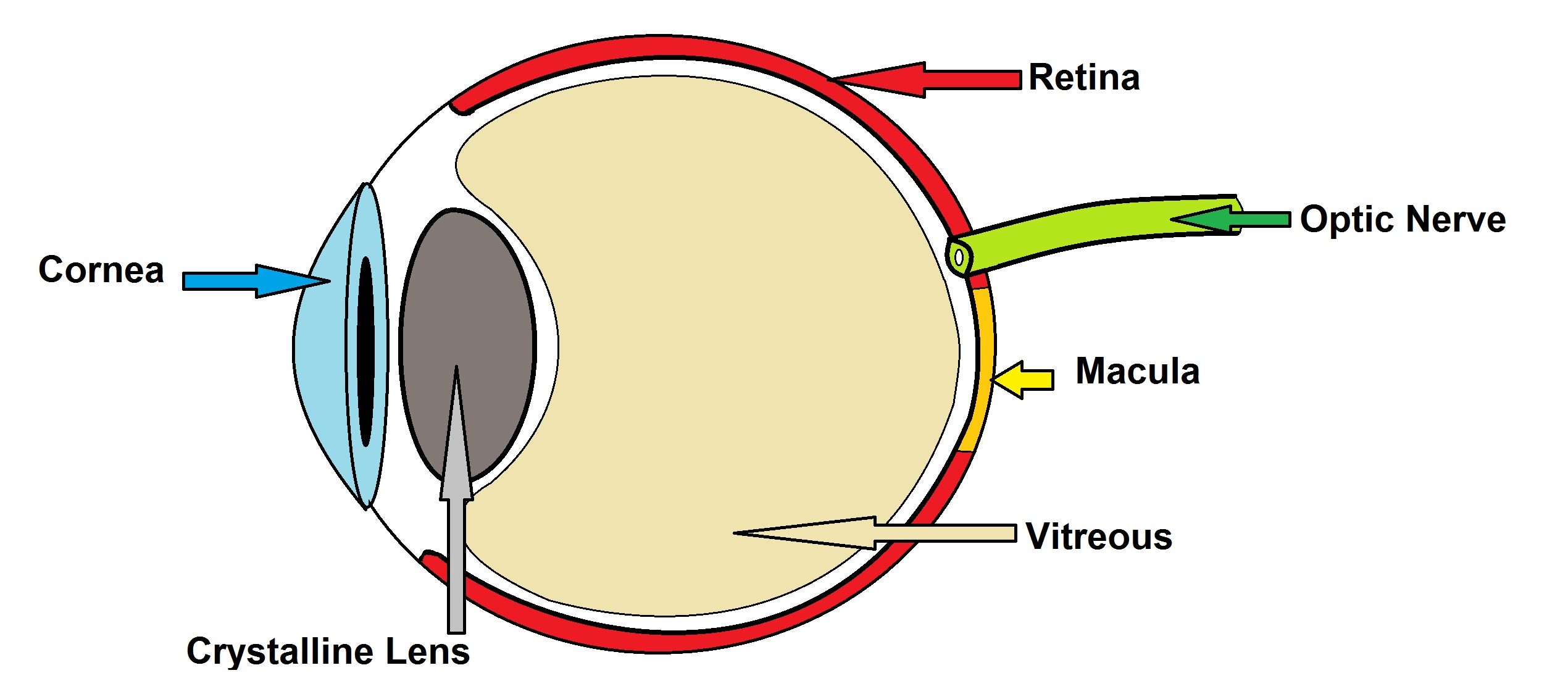The Eye
The eye could be likened to a photographic camera, it has two lenses in the front (Cornea and Crystalline Lens) and the photographic film at the back (the Retina). The Retina is a highly specialised tissue made of nerve cells, which captures the images we can see. The centre of the retina is called the Macula and this is responsible for our central and sharp vision. There is a large cavity in the central portion of the eye, which is occupied by a transparent gel called the Vitreous. The Optic Nerve takes the signal from the retina to the brain.

Retinal and Macular Disease
Diseases of the retina and macula are responsible for the majority of cases of legal blindness in the western world. The
retina is equivalent to the photographic film of a camera and it is a
thin layer of nerve tissue composed of a complex arrangement of nerve
cells and light sensitive cells. The central part of the retina is
called the macula and it is responsible for our fine and detailed central
vision. The layers of the eye could be likened to the layers of an onion with its core removed. The innermost layer is the retina with the retinal blood vessels situated on its surface. Under the retina, there is a layer of pigmented cells and
underneath that, another layer of blood vessels, both of which maintain the
health of the light sensitive cells of the retina. This is a brief
summary of common and important retinal and macular conditions:
MACULAR DISEASE
Age Related Macular Degeneration
Maculopathy due to a Retinal Vein Occlusion - under construction
Central Serous Retinopathy - under construction
RETINAL VASCULAR DISEASE
Non-Proliferative and Proliferative Diabetic Retinopathy
Retinal Vein Occlusion - under construction
VITREORETINAL DISEASE
Posterior Vitreous Detachment, see also Floaters
Vitreomacular Adhesion / Traction - under construction
CATARACT
Options in cataract surgery
High Risk Cataract
Management of Complications of Cataract Surgery
Cataracts
Cataracts are very common and an eminently treatable cause of reduction in vision. By today's standards, the aim of cataract surgery is not only to have the lowest possible operative risk but also to achieve spectacle-independence following surgery, for distance, near or both. The management plan is very much dependent on the patient, both with respect to the health of the eye and the patient's visual requirements and expectations. You can click here for more information on cataracts.
General information on screening
Other important eye conditions